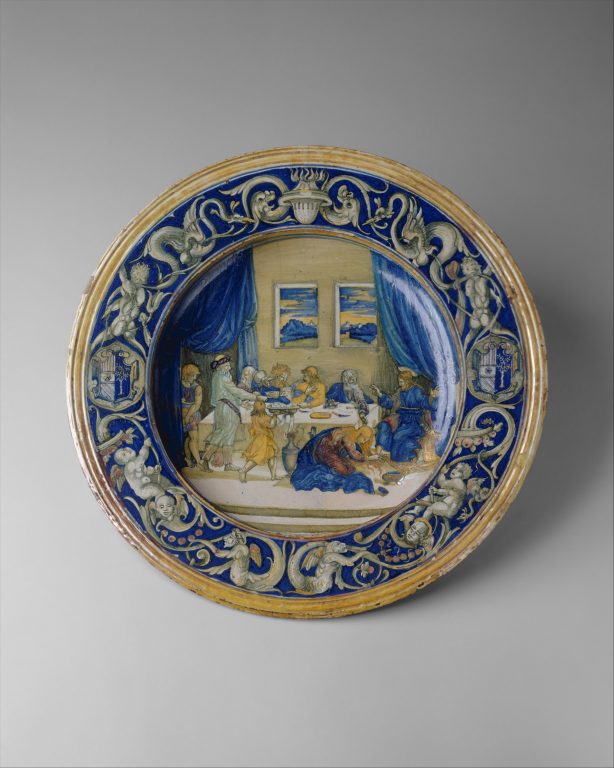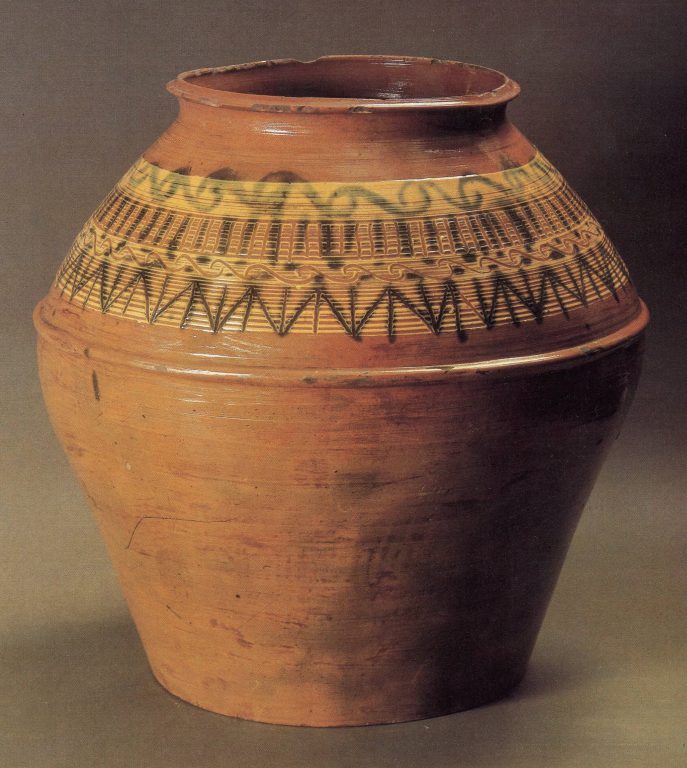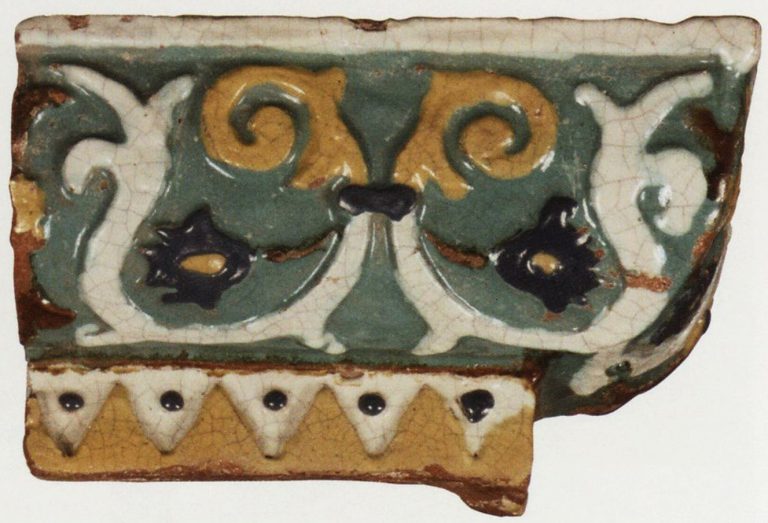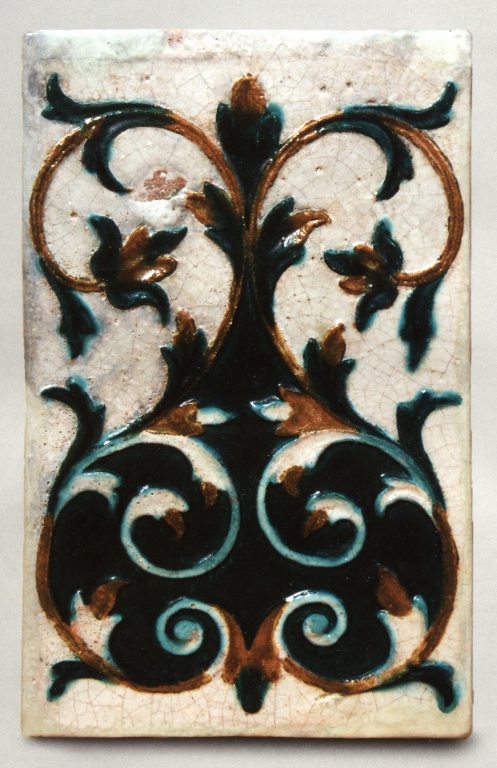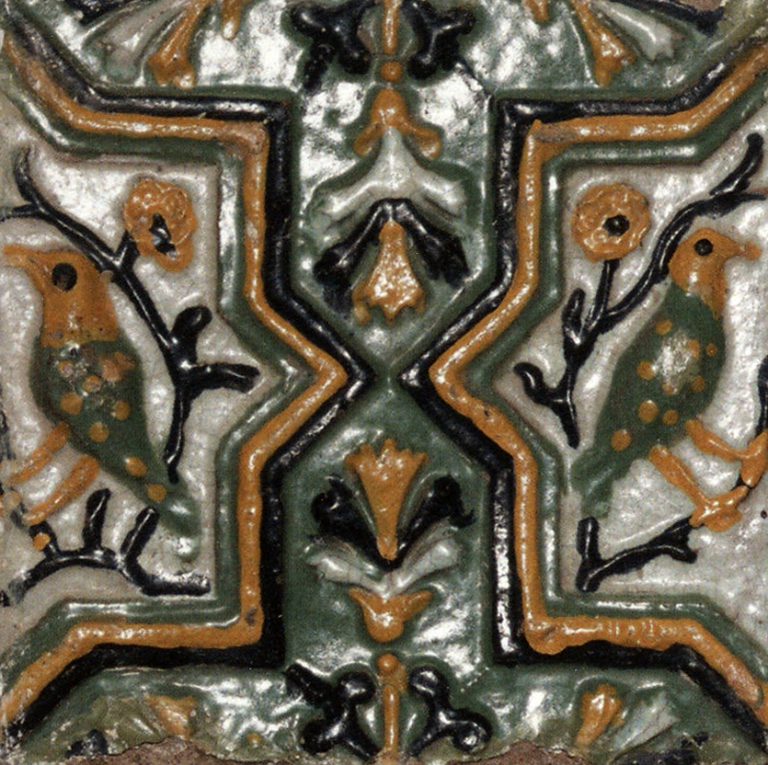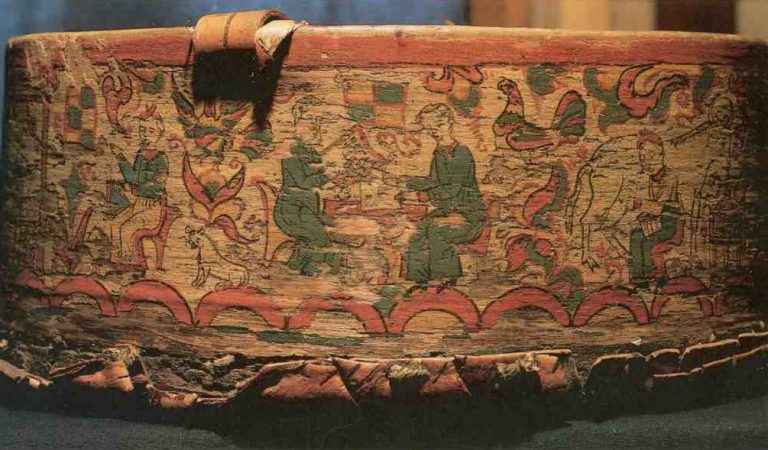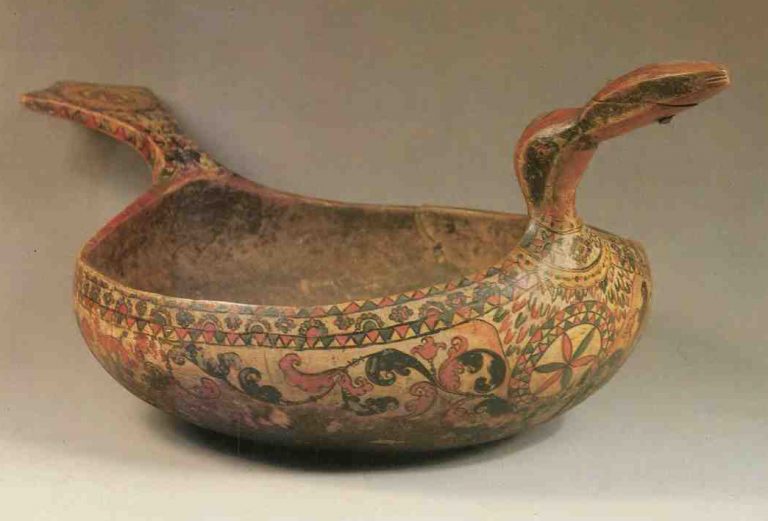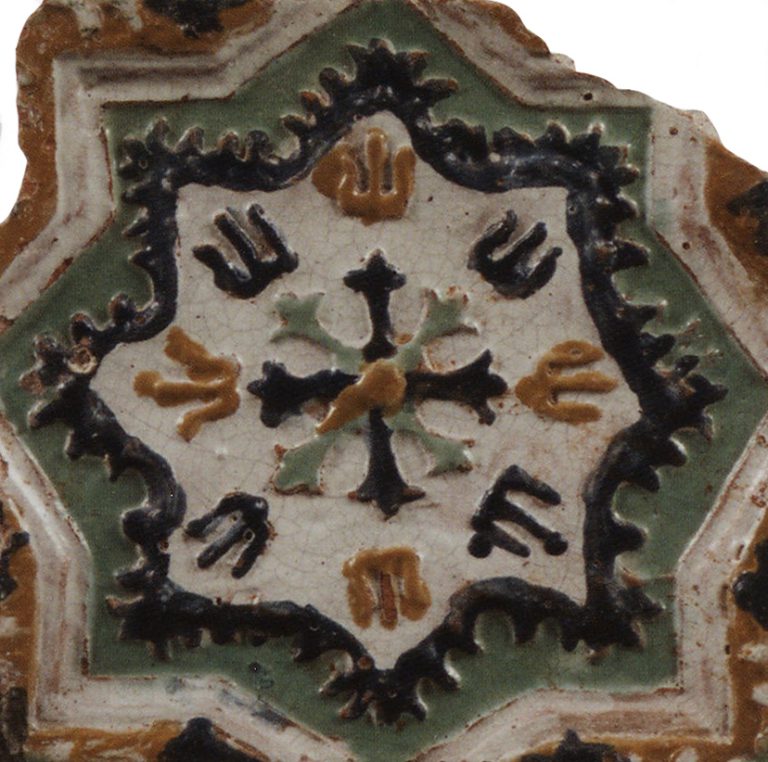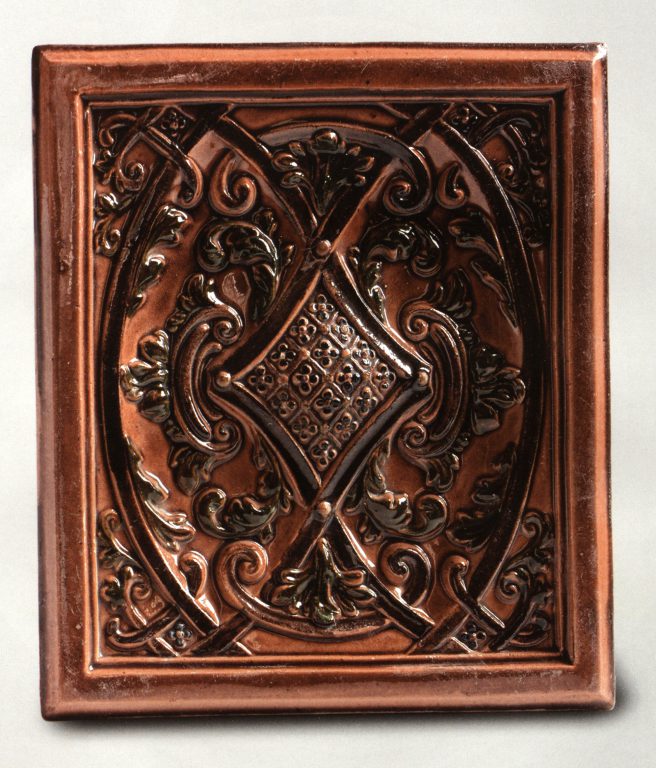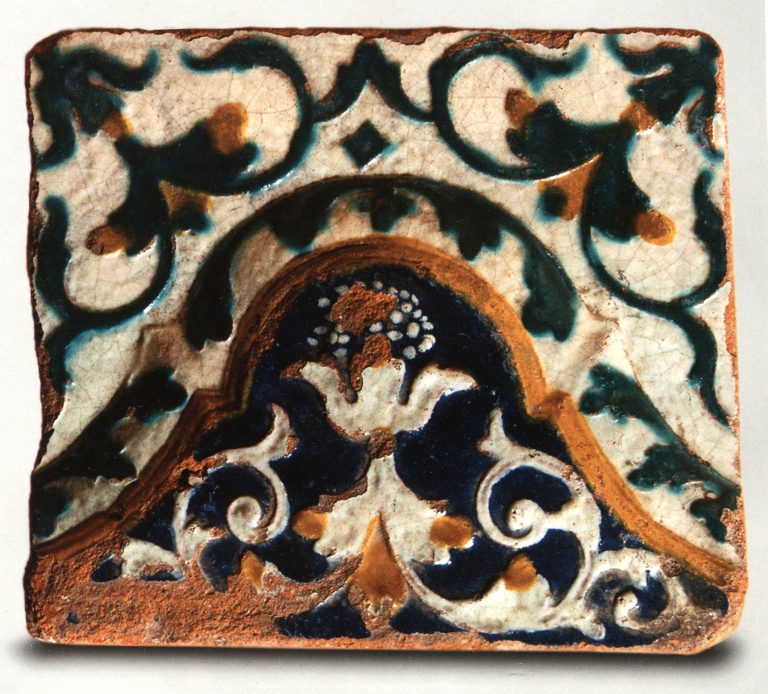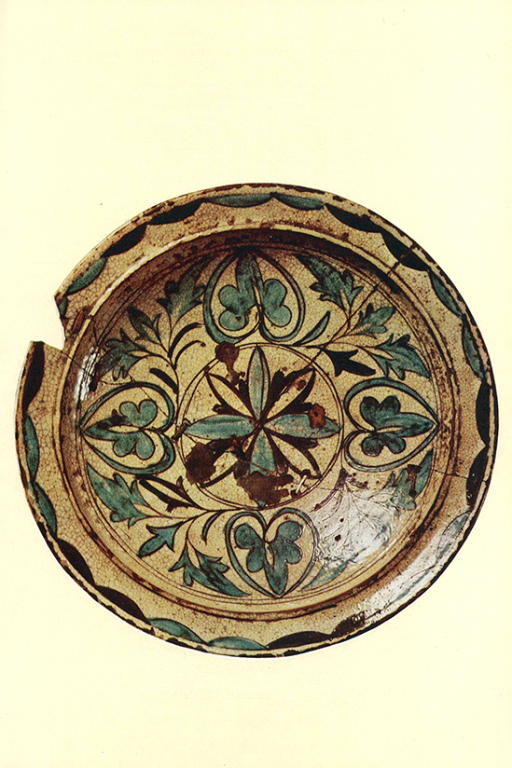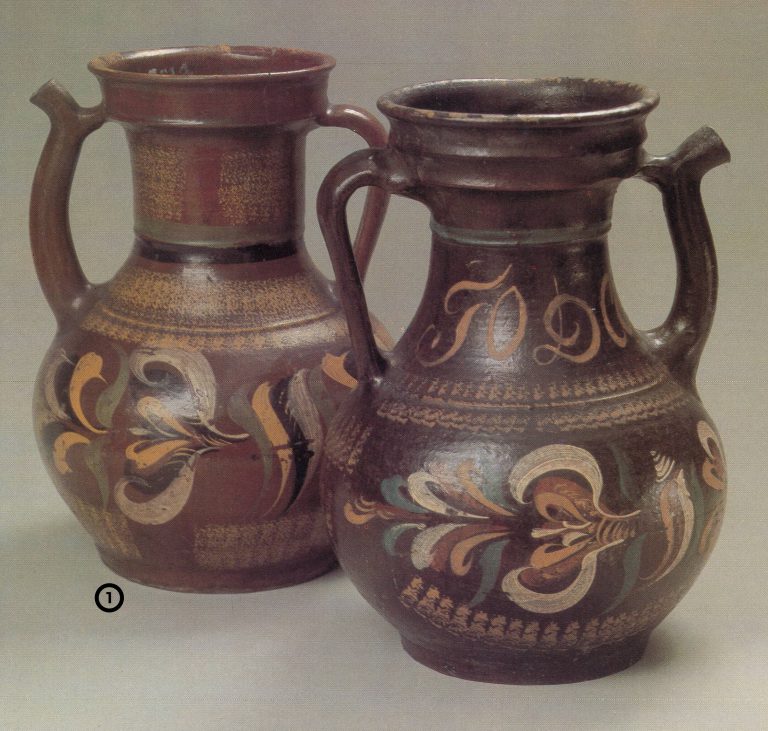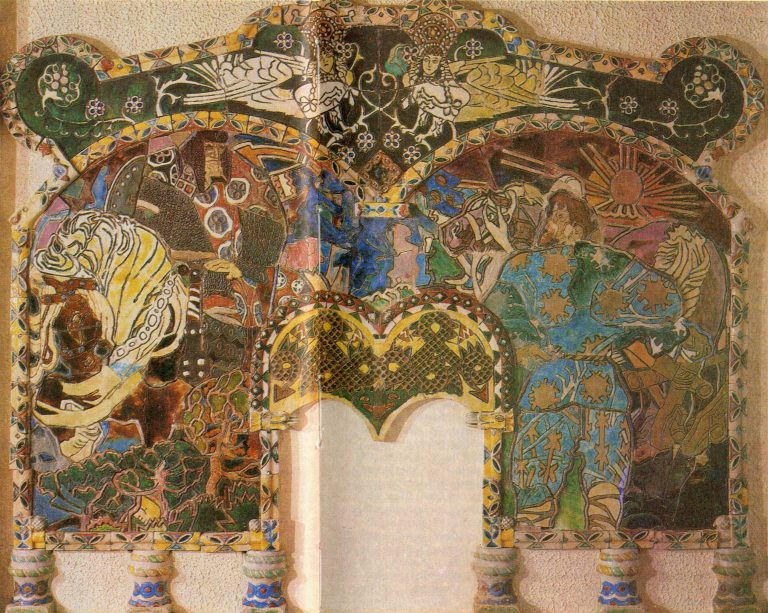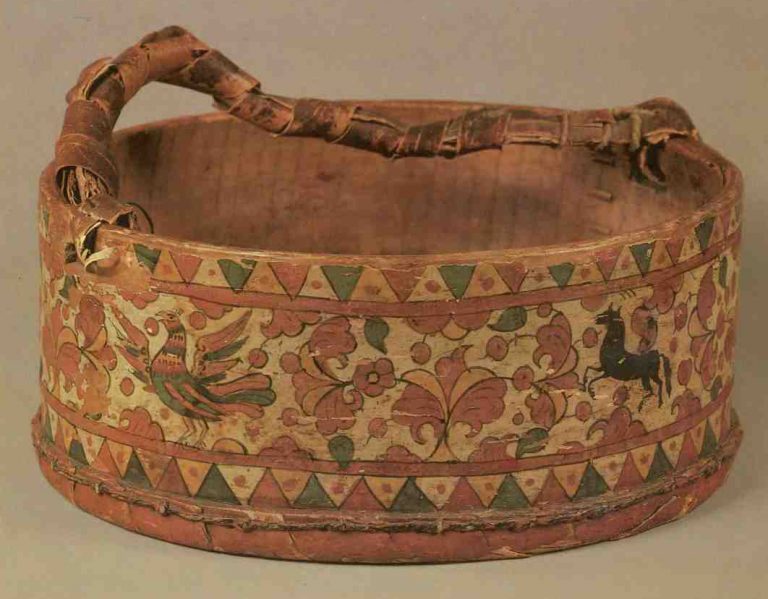

-
Objecttableware: Dish
-
Author of the objectMaestro Giorgio Andreoli
-
Type of arts & crafts
-
MediumMaiolica (tin-glazed earthenware)
-
SizeDiameter: 18 5/16 in. (46.5 cm.)
-
Geography details
Italy -
Country today
-
Date1528
-
Type of sourceDatabase “Metropolitan Museum of Art”
-
Fund that the source refers toMetropolitan Museum of Art
-
Robert Lehman amassed a singularly impressive collection of maiolica produced in the renowned workshops of Italy during the High Renaissance. The core of the collection derives from the first half of the sixteenth century, when both ornamentation and painting reached a pinnacle. During this period a new and soon dominant style emerged, “istoriato”, which featured complex narrative compositions. The mastery of figure and perspective drawing characteristic of this style recalls the work of 16th-century painters.
This large plate representing the Magdalen’s visit to Christ as he dined with Simon the Pharisee is a splendid example of this decorative tradition. The composition, which captures the moment at which the Magdalen anoints Christ’s feet with her tears, precipitating his forgiveness, was adapted from Marcantonio Raimondi’s engraving of the subject, a common source for maiolica painters. Signed on the back by Maestro Giorgio (Giorgio Andreoli of Gubbio, ca. 1465/70-1553) and dated 1528, the plate is one of the most extraordinary products of the workshops in Gubbio in Umbria. The rim of the plate bears elaborate and energetic “grotteschi”–not necessarily executed by the painter of the central “istoriato” scene. The arms are those of Giangiordano Orsini and Felice della Rovere, daughter of Pope Julius II.


